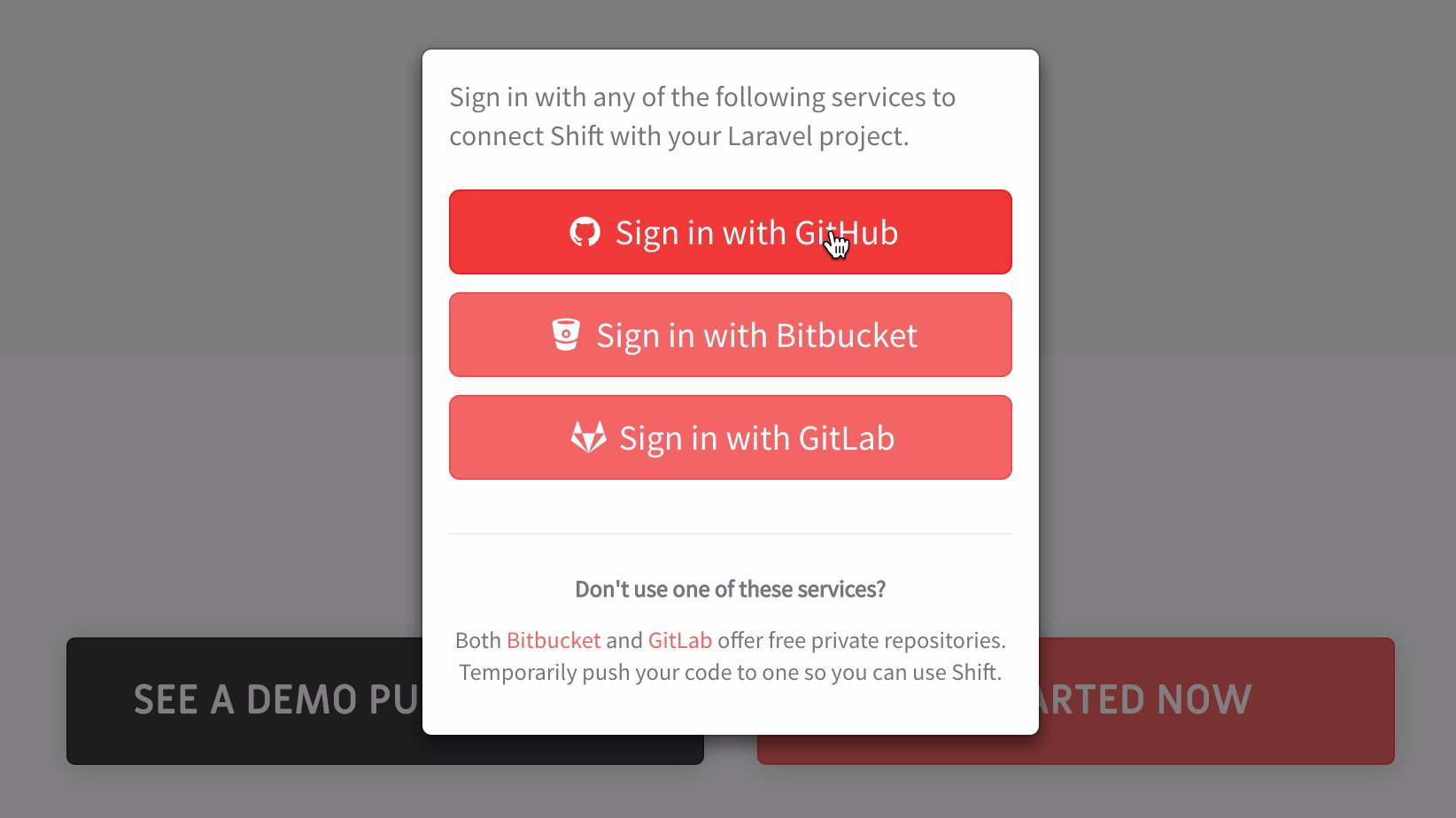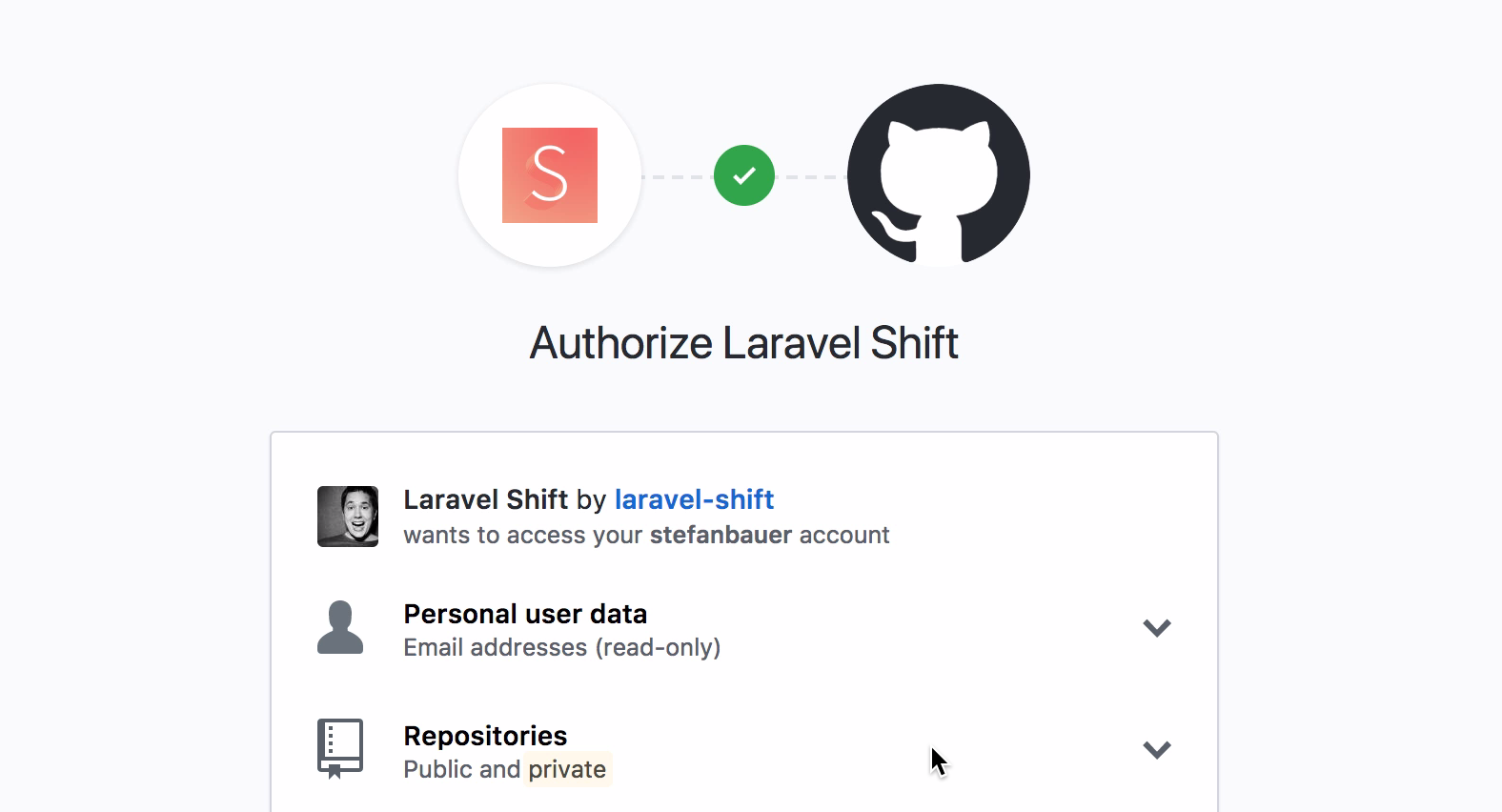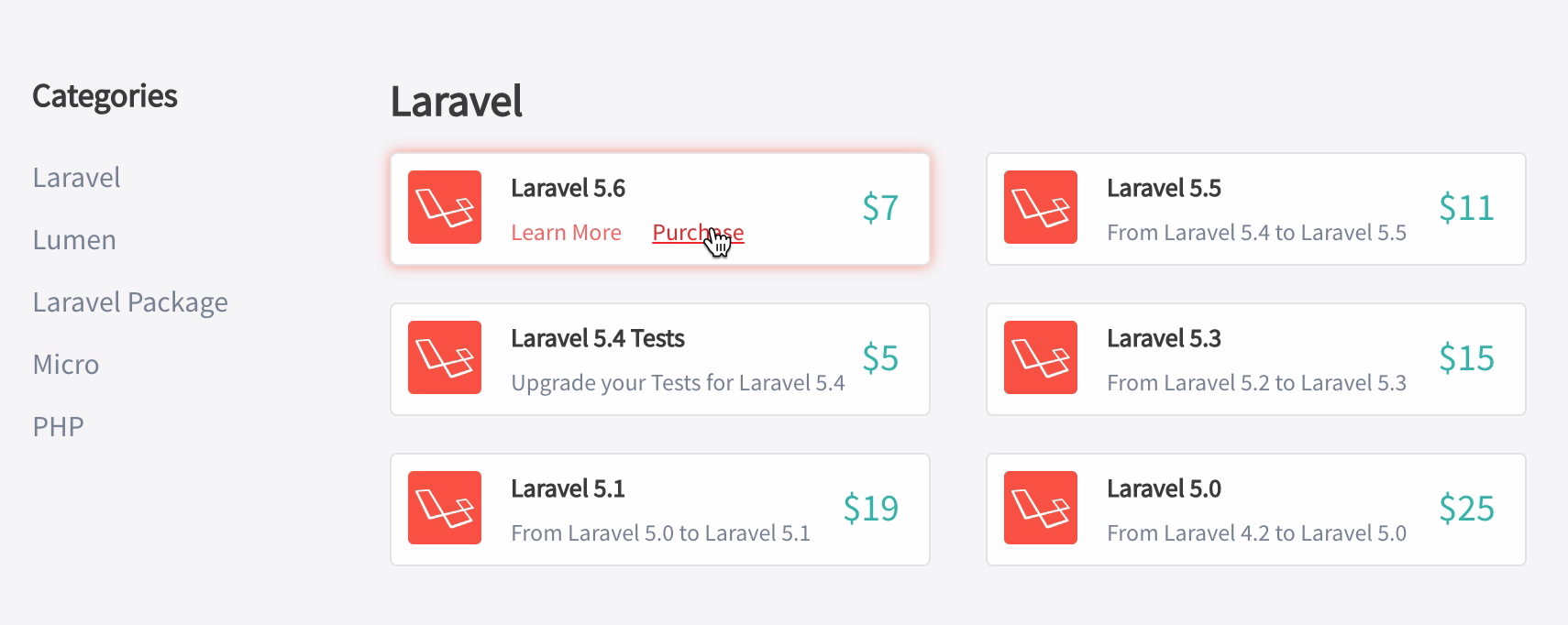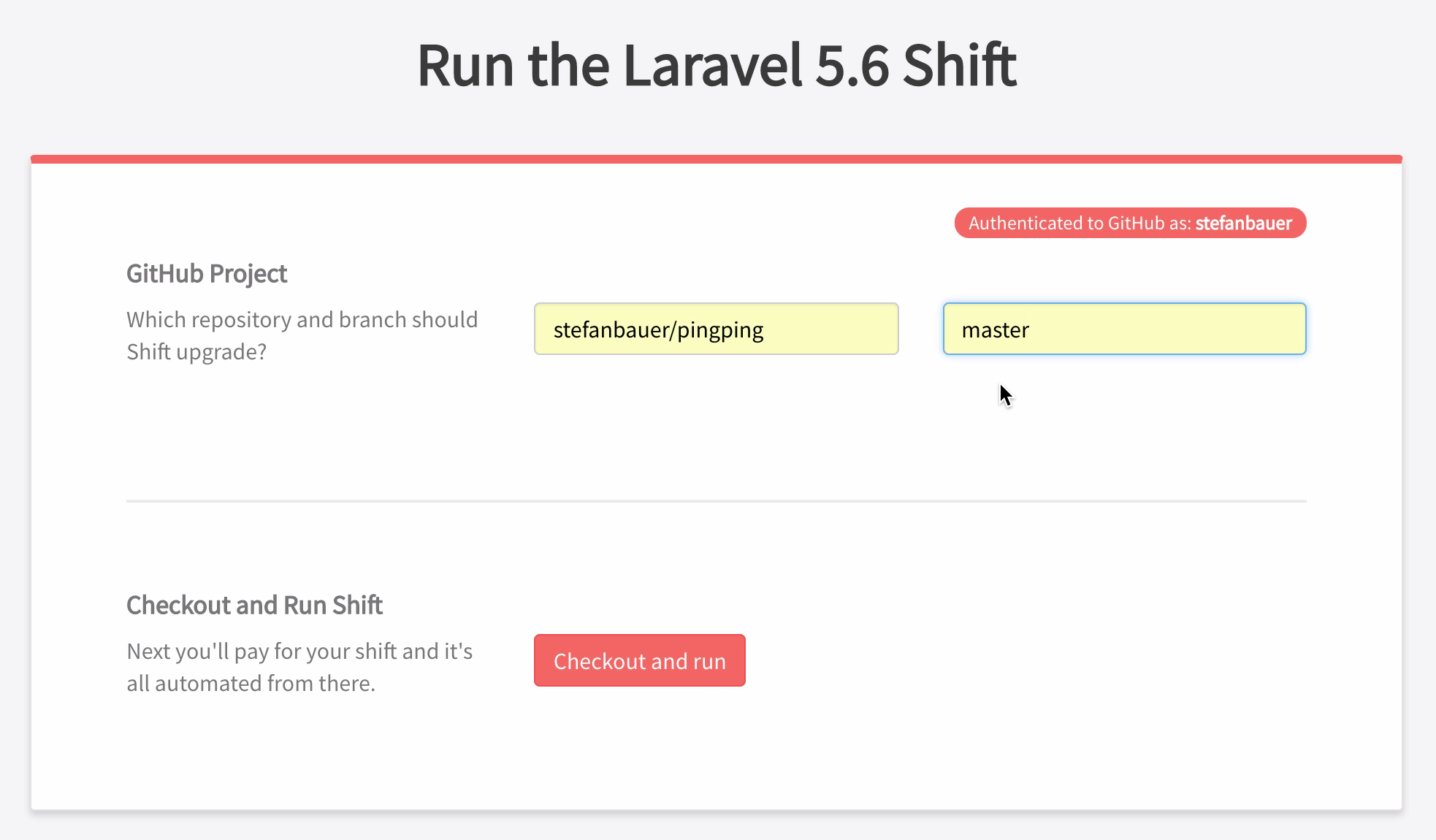Upgrading to Laravel 5.6 using Laravel Shift
What is Laravel Shift and how does it work?
Automated, instant Laravel upgrade services by an army of thorough bots and friendly humans too.
This is, how Laravel Shift describes itself. Laravel Shift was created by Jason McCreary. How Laravel Shift works, is really easy. It's an awesome tool as I'm gonna show you in the next chapters.
- Sign in with Git
- Choose your Shift
- Review the upgrade
Let's do it together.
1. Sign in with Git
First, let's login via Git. Click on the "Get started now"-button. There are three login methods at this time. You can choose between GitHub, Bitbucket or GitLab. In my case, I use GitHub.

Provide your credentials and log in. Now it's time to authorize Laravel Shift to get access your VCS, which is GitHub here. Laravel Shift needs access because it needs to know which repository should be upgraded. So just authorize it and you're good to go.

2. Choose your Shift
Now it's time to choose your Shift. You need to know which Laravel version your current project is on and to which version you would like to upgrade. In our case, we're currently at the version 5.5.x and want to upgrade to Laravel 5.6. So create a new Shift and choose what you need to.

Select your repository
After you chose the shift, you have to tell Laravel Shift which repository you would like to upgrade. How easy is that? Enter your repository details and start shifting.

The shift is running
Now it takes some time. What now happens is, that Laravel Shift examines your repository and your code. It upgrades all the stuff, which is necessary to throw you on the current version of the shift. The cool thing about it is, that it doesn't do anything without your permission. It creates a pull request where you can review all the stuff, that Laravel Shift did. After the Shift has finished, it's up to us to decide what we would like to merge and what not. Maybe there are some more changes we would like to push. But let's check the review in the next chapter.
3. Review the upgrade
When Shift has finished, you should see something like that. Click on the branch symbol. This takes you immediately to the created pull request.

$ composer why symfony/debug
laravel/framework v5.6.2 requires symfony/debug (~4.0)
symfony/http-kernel v4.0.4 requires symfony/debug (~3.4|~4.0)
In our case, it's fine to a run a composer update, as we have no custom packages pulled in and I know what has been changed in these packages. So give it a run! This updates our composer.lock. Now it's time to commit that too and push it up to the shift branch. The result of this commit you can find here.
Merging back
That's it. We're done. We reviewed everything. We modified everything that was necessary and now the time has come to merge that into our master branch. As you know me, I do everyhing on the CLI because I have more control. Here, I merge it (just for you) in the GitHub UI.

Some words on that: Laravel Shift created four commits as I remember. We pushed another two commits on that branch. What I hate, even if some other people always saying that this doesn't matter, is a dirty and messy git history. I love clean and simple git histories, that show the progress in a very clean and simple way. Should be readable like a book. So we squash all the commits of the shift branch down to one with a simplified but clear commit message.
Congratulations! We're done! This was the very first time, I've ever tried Laravel Shift. I was surprised how easy it was. I can highly recommend it to everyone who'd like to upgrade Laravel projects without any hassle.